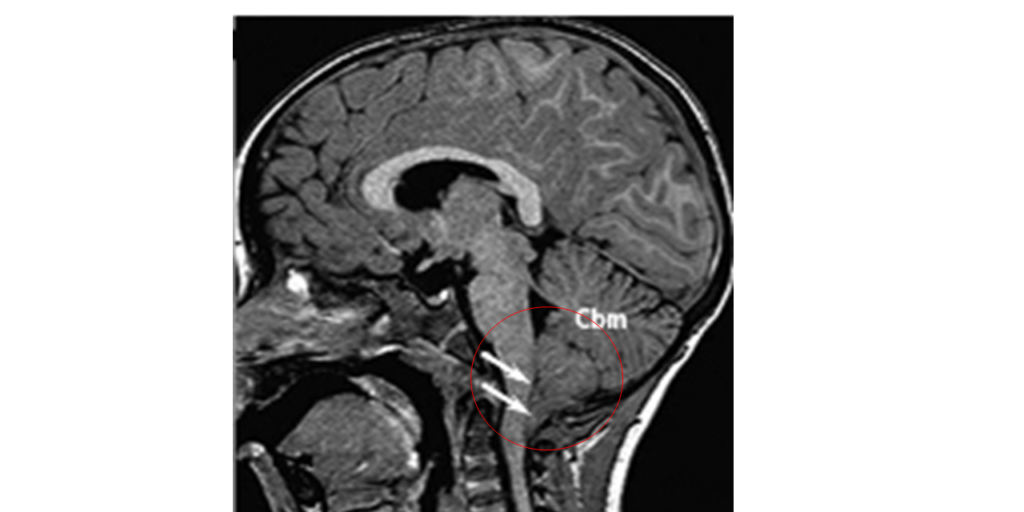Congenital Disorders of the Central Nervous System


The central nervous system (CNS) comprising the brain and spinal cord is an incredibly complex part of the human body, so it is no surprise that sometimes things go awry during development. The various anatomic anomalies that result can be so severe as to be incompatible with life, such as when most or all of the brain fails to develop, a condition known as anencephaly. CNS anomalies are some of the most common congenital anomalies, and they are among the leading causes of infant mortality and fetal loss. These anomalies can involve brain, spinal cord, and meningeal development and position. Although the brain and spinal cord each arise from the neural tube, their development differs. The end result is that the spinal cord is fairly uniform in structure throughout its length, but the brain subdivides into multiple regions, each with its own structure. Accordingly, congenital anomalies of the spinal cord are similar anywhere along its length, but congenital anomalies of the brain are different in different brain regions.
We’ll discuss CNS congenital anomalies in terms of those that can involve both brain and spinal cord (neural tube defects [NTDs]), those that involve the cranial parts of the brain (forebrain anomalies), those that involve the caudal parts of the brain (posterior fossa anomalies), and those that involve the spinal cord, as well as congenital hydrocephalus.
After listening to this AudioBrick, you should be able to:
- Describe the main anatomic feature shared by the neural tube defects, and list some of the known etiologies.
- Compare and contrast the anatomic and clinical features of spina bifida occulta, meningocele, meningomyelocele, and myeloschisis.
- Describe the mechanisms that lead to defects of the skull.
- Describe the main mechanism that leads to forebrain abnormalities.
- Discuss the anatomic and clinical features and treatment of congenital hydrocephalus.
- Describe the mechanism that leads to defects of the cerebellum and brainstem.
- Describe the mechanism that leads to defects of the spinal cord, and discuss the anatomic and clinical features of syringomyelia.
You can also check out the original brick from our Neurology and Special Senses collection, which is available for free.
Learn more about Rx Bricks by signing up for a free USMLE-Rx account: www.usmle-rx.com
You will get 5 days of full access to our Rx360+ program, including nearly 800 Rx Bricks. After the 5-day period, you will still be able to access over 150 free bricks, including the entire collections for General Microbiology and Cellular and Molecular Biology.
***
If you enjoyed this episode, we’d love for you to leave a review on Apple Podcasts. It helps with our visibility, and the more med students (or future med students) listen to the podcast, the more we can provide to the future physicians of the world.
Follow USMLE-Rx at:
Facebook: www.facebook.com/usmlerx
Blog: www.firstaidteam.com
Twitter: https://twitter.com/firstaidteam
Instagram: https://www.instagram.com/firstaidteam/
YouTube: www.youtube.com/USMLERX
Learn how you can access over 150 of our bricks for FREE: https://usmlerx.wpengine.com/free-bricks/
from our Musculoskeletal, Skin, and Connective Tissue collection, which is available for free.
Learn more about Rx Bricks by signing up for a free USMLE-Rx account: www.usmle-rx.com
You will get 5 days of full access to our Rx360+ program, including nearly 800 Rx Bricks. After the 5-day period, you will still be able to access over 150 free bricks, including the entire collections for General Microbiology and Cellular and Molecular Biology.
